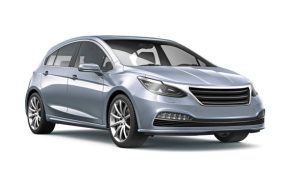
In honor of the seventh Day of Christmas, it’s the time to be thankful for deductions from vehicles that include cars vehicles, trucks, and SUVs that are the best they’ve offered business owners over the past 40 years. The tax law on this subject has been transformed dramatically with legislation known as the Tax Cuts and Jobs Act (TCJA), and the deductions for cars, trucks, and SUVs that are available until 2023 are truly amazing.
In the event that you did not purchase the latest vehicle for your company in 2019 and are planning to continue using this “mileage deduction,” then this isn’t a tax year-end method that you should think about. But, if you’re searching for an automobile or truck and you purchase a brand used or second-hand vehicle prior to December 31, 2019, the deduction can be significant in the event that your circumstances permit it.
The main question to be considered prior to rushing out to purchase something is what is the best strategy, either in terms of mileage or actual costs. It’s not a simple question and requires you to consider a variety of variables. Below, I’ve listed seven general guidelines to aid you in the process of making a decision. It’s first important that you know these two primary ways to deduct auto expenses. The process begins here.
1. Mileage. If you own any vehicles, you can utilize mileage as a method of calculating the cost for usage of your car for business. For 2019, your mileage deductions are according to the following:
- Commercial — $58 per mile.
- Charity – 14 cents per mile.
- Health and moving — 20 cents per mile.
- Personal or commuter -Tax-free.
Prior to the tax reform, 90 of our clients employed the mileage deduction because it’s easy, simple, and provides a substantial removal; however, now it’s a different ballgame. Be aware that almost every business owner’s tax situation will differ, and many aspects can affect the calculation.
2. Actual Costs. Another method of subtracting expenses for automobiles is making use of the actual expenses for the car. If you opt for this method, then you can’t use mileage. In essence, you record your fuel consumption, repairs or maintenance, insurance, and tires, and you additionally “depreciate” the vehicle or part of the lease payments if leasing.
The issue in the past was that due to the limitations imposed by the government in the early 1980s, the deduction for depreciation was extremely small. If, for instance, you purchased a car worth $40,000 and used it 100% to work, then your beliefs maximum during the first five years would be $15,060. For the full depreciation of the vehicle, it will take 19 years! Is that not wild?
With this legislation, the Tax Cuts and Jobs Act, We have two significant changes that are beneficial to entrepreneurs with small businesses: increased annual depreciation limits as well as bonus depreciation.
Higher Deprecation. The new law means that the limits are significantly raised, regardless of whether the vehicle is brand new or used. You can actually change a car you own to commercial use and get the same depreciation amount. There is no requirement to buy an entirely new or used vehicle in order to start depreciation and also actual expenses. Also, this is assuming that you don’t employ the mileage method. This is something I will discuss in greater detail below. The new limits for the year are:
- Year 1 — $10,000.
- Year 2 — $16,000.
- Year 3 — $9,600.
- Year 4 and each following year — $5,760.
When you purchase the car for $40,000 between 2018 and 2023 (compare the previous example), You can write off 90 percent of the cost for three years, including repairs, fuel, or maintenance. It’s a good 80,000 miles if you apply this mileage calculation.
Bonus Depreciation. Also, under the new law, we receive an incentive if we go out and purchase a brand-new or used vehicle. This means that it does not have the latest model, something new to you. The purpose of this “bonus” is to stimulate the economy. The bonus depreciation amount is $8,000 and is taken directly from the top. Here’s the calculation:
- $40,000 vehicle.
- $8,000 bonus depreciation.
- The base for deprecation is $32,000, which will be fully amortized over the first three years.
What is the best method for you? Actual or mileage? This is where things get difficult. There are many issues to think about, such as:
- Miles per gallon (MPG) for the vehicle.
- Bonus depreciation for you make a purchase.
- Repairs that are total or anticipated and maintenance.
- How many miles do you expect to drive on your vehicle?
- Of course, the most important thing is how much the car will cost you.
However, we’ve found certain general rules that could, at the very least, provide the basis for a discussion and could even direct a customer to the right direction when they’re shopping for a new car or truck.
- Rule 1. If you are going to be driving many business miles and your vehicle is less expensive to buy in comparison, then the method of mileage strategy is the best option.is likely to be the winner.
- Rule 2. Suppose you’re not going to travel lots of business-related miles and you’re driving a vehicle that is used solely or exclusively for business purposes. In that case, you’ll be leaning towards the actual method. actual approach.
- Rule 3. If you’re not planning to travel lots of business travel and you’re looking for a higher-priced vehicle that is used solely or exclusively for business use, you must think about leasing and the real procedure. It will cost you less monthly, and it’s a better, economically sound choice.
- Rule 4. Suppose you are likely to be driving low mileage and it’s a less expensive vehicle that is used mostly or exclusively for business purposes. In that case, I’d still recommend the method that you actually use since the miles won’t offer an advantage over at the very least, some form of depreciation.
- Rule 5. If you are planning to utilize your vehicle part-time to conduct business due to a day job, you’ll typically employ the miles method. This is because you need to demonstrate at least 50 percent of your business usage to be able to use the technique.
- Rule No. 6. If you are planning to purchase a 6,000-pound or more truck or SUV, typically, you’ll prefer the method that you actually use because you will get less MPG, driving higher the actual cost -as well as bonus depreciation being 100. That means you could write off all of your vehicles within the initial year.
- Rule 7. Suppose you have an impressive MPG (think electric or hybrid), however. In that case, you nevertheless have a low usage and miles, you’ll tend to use the mileage approach because your operating expenses are likely to be lower.
(Again, remember that these are general suggestions and suggestions. It would be best if you discussed all circumstances of your case with your tax professional prior to deciding on a method.)
Whichever method you decide to use, bear in mind a specific point regarding the tracking of mileage. It’s essential to keep track of how much you drive (or calculate it to as well as you legally and honestly can) in order to be the basis for determining the “business-use percentage” for the actual method and the deduction for mileage if you’re employing this method. It could be recorded in paper form or a spreadsheet, but I have joined forces with Deductr to develop my tax planning and tracking Phone application (this link offers 50% off on the App Store).
Leased vehicles. Leasing is an amazing deduction, but it’s there are some drawbacks. Tax benefits can be amazing. It is possible to deduct every single expense, including the lease payment (based on your percentage of business use), and save the cost of a luxurious vehicle when monthly payments could be less expensive in the case of leasing.
The downside isn’t too surprising for those who have had a lease on a vehicle previously. The mileage restrictions set that the manufacturer or dealer sets can cost you in the long run. If, for instance, you’re only allowed 15,000 miles per year under the lease, when you take on the vehicle at the close of the lease, you will be required to pay for each mile you drove over.
However, the advantage of leasing is that those who need a second vehicle or something a bit more elegant for taking customers and clients out to take lunch and to conduct sales visits. If a customer has a different car for personal or business usage, where they are able to in a hurry to travel and accumulate them when they are required, not necessarily on the vehicle they lease and leasing could be the ideal option for the second vehicle.
In the end, I recommend you develop a spreadsheet in order to evaluate the situation. It doesn’t need to be complicated either. Think about your options, and remember that when you’re planning to invest thousands of dollars in this car, it’s beneficial to spend a few minutes researching the various tax deduction options.
Set up columns to compare the mileage of vehicles, whether to purchase or to lease, and the rows can be different types of cars and various scenarios. Also, you can run the numbers with your tax advisor on what your tax deduction could actually be in the year 2019 in the event that you purchase. You can begin by doing some preliminary studies and calculations by accessing information on the internet and having your accountant/tax preparer refine your analysis. It can make a huge difference in cash.





